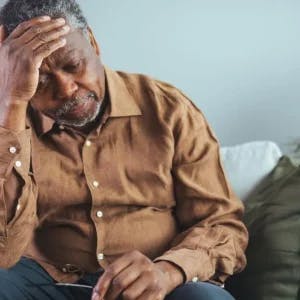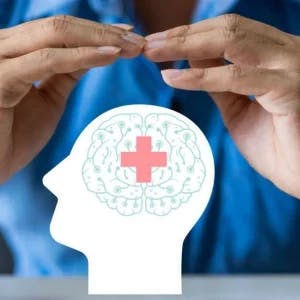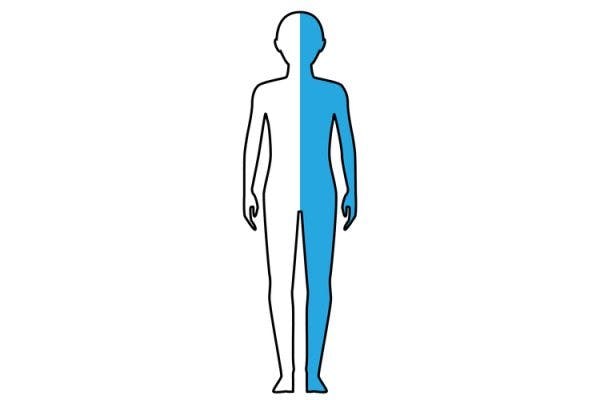Vomiting after stroke may be serious, as it may indicate the onset of another stroke. Furthermore, frequent vomiting can gradually deplete the body of vital fluids and nutrients, resulting in dehydration and/or malnutrition. There are various causes of vomiting after stroke, and each requires its own separate treatment. Therefore, a correct diagnosis is critical for recovery.
This article will discuss the causes of vomiting after stroke and highlight possible treatment options. Although there is not one ideal treatment for addressing vomiting after stroke, this article will describe some of the most common recommendations.
Understanding the Causes of Vomiting After Stroke
Some individuals may experience nausea and vomiting after stroke. While occasional vomiting after stroke may be concerning, persistent vomiting should be treated as a medical emergency. Since losing nutrients and fluids on a consistent basis can cause one’s health to rapidly decline, it is essential to seek medical attention in a timely manner.
It can be dangerous to self-diagnose and self-treat persistent vomiting because, if the wrong treatment is pursued, it can delay recovery and worsen malnutrition. Working with a skilled medical team is crucial.
Here are a few possible causes of vomiting after stroke:
- Cyclic vomiting syndrome. This condition is characterized by recurrent episodes of stereotyped vomiting separated by regular symptom-free periods. Researchers speculate that cyclic vomiting syndrome occurs as a result of dysfunction in the gut-brain connection.
- Side effects from medication. Certain medications can cause vomiting in some individuals. To investigate this, check the side effects on medication labels and observe the relationship between the timing of medication administration and the onset of vomiting. However, regardless of findings, it is important for survivors to talk with their doctor before making any major medication changes.
- Onset of another stroke. While most commonly seen with hemorrhagic stroke, one study found that 14.5% of all stroke survivors experienced vomiting at the onset of stroke. Therefore, it is essential to watch for other stroke warning signs when vomiting occurs, such as slurred speech or weakness in one arm or leg. Seek medical attention immediately if a stroke is suspected.
- Damage to certain areas of the brain after stroke. Nausea and vomiting are frequently seen in individuals with vertebrobasilar stroke. Additionally, cerebellar stroke survivors commonly experience severe vertigo, nausea, and vomiting, along with poor balance.
- Ictal vomiting. Although rare, sometimes seizures manifest as vomiting. Since there is an increased likelihood of seizures after stroke, it is a possibility that vomiting may signal seizure activity.
- Vestibular disorders. When the vestibular system is impacted by stroke, it can cause poor balance, impaired gait, dizziness, nausea, and vomiting.
With such a wide range of causes, it is vital to monitor vomiting frequency and the circumstances surrounding episodes to help accurately determine the cause. Identifying the cause of vomiting after stroke can influence recommended treatment options.
How Is Vomiting After Stroke Treated?
Often, hospitalization is required for persistent vomiting to replenish fluids and provide essential nutrients. During hospitalization, the medical team may perform a number of tests to diagnose any underlying conditions.
After diagnosis, treatment options for vomiting after stroke may include:
Prescribing Medications
Depending on the cause of vomiting after stroke, medication may help relieve symptoms. For example:
- Tricyclic antidepressants, such as imipramine hydrochloride, may improve cyclic vomiting syndrome, potentially due to their impact on the gut-brain axis.
- Anti-seizure medications may relieve ictal vomiting.
- Pharmacological treatments for vestibular dysfunction and vertigo may also relieve nausea and vomiting.
While medications are not always the answer, they may help. However, individuals should always talk with their doctor before adding any new medications.
Adjusting Problematic Medications
Although medications can help relieve vomiting, they can also be a contributing cause. If vomiting is listed as a potential side effect of any new prescriptions, begin watching for any patterns surrounding the timing of vomiting and medication administration. It is possible that nausea and/or vomiting occur after taking certain prescriptions.
If it seems probable that a new prescription is resulting in vomiting and nausea, individuals should discuss potential solutions with their doctor. It may be possible to substitute the problematic medication for a similar medicine that is more tolerable.
Vestibular Rehabilitation
When nausea and vomiting are accompanied by balance challenges, the vestibular system may be affected. In this case, vestibular rehabilitation may help.
Vestibular rehabilitation exercises are designed to help retrain the brain and body to regulate the sense of equilibrium. Ideally, this therapy may reduce feelings of nausea and/or vomiting among those experiencing vestibular dysfunction after stroke.
Alternative Remedies: Acupuncture and Herbal Supplements
While alternative remedies may help relieve vomiting after stroke, some doctors may recommend using caution with these types of treatments. This is because there is still insufficient evidence supporting their use.
Furthermore, relying on alternative remedies rather than using more medically effective treatments could prolong vomiting, exacerbating the negative side effects of long-term vomiting. Still, with a doctor’s approval, alternative remedies could be worth a shot, especially if used in conjunction with other treatments.
While not specific to stroke survivors, there is a growing body of evidence supporting the use of acupuncture to relieve vomiting. For example, systematic reviews have suggested that acupuncture may help reduce nausea and vomiting related to chemotherapy and pregnancy, as well as symptoms that occur post-operatively. This is especially true when acupuncture is combined with conventional treatments.
While there don’t seem to be any studies regarding the effectiveness of acupuncture for reducing vomiting among stroke survivors yet, acupuncture is a low-risk treatment. Especially since acupuncture can also have other stroke-related benefits, it could be worth a try.
Chinese herbs may also be used to reduce vomiting after stroke. While clinical studies seem to be lacking here as well, it could be worth looking into for those interested in an alternative approach. However, it is always recommended that survivors discuss all treatments they are pursuing with their doctor.
Overcoming Nausea and Vomiting After Stroke
With many potential causes for vomiting after stroke, it is critical to work with a doctor for a formal diagnosis. This can help expedite treatment and reduce negative side effects.
While more research is needed regarding effective treatments for vomiting after stroke, adding or adjusting medications may help relieve symptoms. Vestibular therapy may also be effective for those experiencing vomiting as a result of vertigo or other types of vestibular dysfunction. Alternative remedies may also be considered in conjunction with a doctor’s approval.
Hopefully the information in this article can serve as a starting point for learning about possible causes and remedies for vomiting after stroke. As always, it is strongly recommended that survivors consult with their doctor to determine which treatments may be most effective for their specific condition.















